 This is the first in a series of very serious and important reports on one of the mysteries we have not yet discussed about the sinking of the s/v Sean Seamour II and the harrowing rescue of its crew.
This is the first in a series of very serious and important reports on one of the mysteries we have not yet discussed about the sinking of the s/v Sean Seamour II and the harrowing rescue of its crew.
The potential malfunction of one of the EPIRBs that was activated after the sailboat was struck and sunk by a very powerful wave during Subtropical Storm Andrea.
In doing the research and deciding to write about this issue, let me be very clear. It is not my intention to single out any one manufacturer of EPIRBs, since there has been problems and concerns with a host of EPIRBs throughout their development and deployment. But this current issue has some very critical ramifications and lessons for all mariners who use any type of EPIRB. I will also note that as of this writing, the entire episode regarding this EPIRB is under investigation by both the United States Coast Guard and by independent technical specialists on behalf of the Master of the Sean Seamour II.
I am also very sure that ACR Electronics of Fort Lauderdale, Florida is also very concerned and interested in getting to the bottom of the cause of the potential malfunction.
Let's start by going back into the log of the s/v Sean Seamour II; "immediately after the knockdown, I initiated the EPIRB, an ACR 406 Rapidfix. A half hour later , I realized that the strobe light was no longer functioning and that the intensity of the "on" light had dropped considerably.
I reinitialized the unit, with no further success whereas I had the unit re-certified two weeks before. But far worst yet is the fact that the Coast Guard received the signal but attributed it to another vessel! In their database my ID corresponded to a boat in Alabama. The Coast Guard immediately called the point of contact indicated in the database, having to wake up the owner at three am to be told "no I have not initiated my EPIRB.
They asked him to disconnect the battery... and the signal stop emitting at that approximate moment - about the same time my unit stopped functioning! Considering this, they decided to stop the search on this signal! What saved me, is that I had kept the EPIRB from a preceding boat, Lou Pantaï. This second EPIRB was held in its cradle on the inside of the hard dodger. Upon the first knockdown this structure was sheared off the boat and sank, but luckily, the 11 year old EPIRB went into hydrostatic release and provided the Coast Guard with Lu Pantaï ID. It is this one that they sought and found - failing that none of us would have survived.
There is therefore two faults: the first relating to the registration of the EPIRB, this was done by a UK company, the second by the manufacturer' accredited service station who pronounced the unit valid, when this was not the case."
In up coming postings we are going to take a very close look at EPIRBs and especially the ACR 406 MHz EPIRB Rapidfix with GPS Interface Category II, Emergency Position Indicating Radio Beacon (EPIRB) and the two issues as outlined by the s/v Sean Seamour II's Master. "The registration of the EPIRB, this was done by a UK company, the second by the manufacturer' accredited service station who pronounced the unit valid, when this was not the case".
Before we take a look and investigate what went wrong with this EPIRB and there are many possibilities, we must first understand what a EPIRB really is and how it works.
What is an EPIRB and how does it work?
EPIRB stands for Emergency Position Indicating Radio Beacon. An EPIRB is meant to help rescuers locate you in an emergency situation, and these radios have saved many lives since their creation in the 1970s. Boaters are the main users of EPIRBs. A modern EPIRB is a sophisticated device that contains:
Once activated, both of the radios start transmitting. Approximately 24,000 miles (39,000 km) up in space, a GOES weather satellite in a geosynchronous orbit can detect the 406-MHz signal. Embedded in the signal is a unique serial number, and, if the unit is equipped with a GPS receiver, the exact location of the radio is conveyed in the signal as well. If the EPIRB is properly registered, the serial number lets the Coast Guard know who owns the EPIRB. Rescuers in planes or boats can home in on the EPIRB using either the 406-MHz or 121.5-MHz signal. Older EPIRBs did not contain the GPS receiver, so the GOES satellite received only a serial number. To locate the EPIRB, another set of satellites (like the TIROS-N satellite) orbiting the planet in a low polar orbit could pick up the signal as it passed overhead. This would give a rough fix on the location, but it took several hours for a satellite to come into range.
Types of EPIRBs Emergency position indicating radiobeacons (EPIRBs), devices which cost from $200 to about $1500, are designed to save your life if you get into trouble by alerting rescue authorities and indicating your location. EPIRB types are described below:
- Class A
- 121.5/243 MHZ. Float-free, automatically-activating, detectable by aircraft and satellite. Coverage is limited. An alert from this device to a rescue coordination center may be delayed 4 - 6 or more hours. These devices have been phased out by the FCC and are no longer recognized.
- Class B
- 121.5/243 MHZ. Manually activated version of Class A. These devices have been phased out by the FCC and are no longer recognized.
- Class C
- VHF ch15/16. Manually activated, operates on maritime channels only. Not detectable by satellite. These devices have been phased out by the FCC and are no longer recognized.
- Class S
- 121.5/243 MHZ. Similar to Class B, except it floats, or is an integral part of a survival craft. These devices have been phased out by the FCC and are no longer recognized.
- Category I
- 406/121.5 MHZ. Float-free, automatically activated EPIRB. Detectable by satellite anywhere in the world. Recognized by GMDSS.
- Category II
- 406/121.5 MHZ. Similar to Category I, except is manually activated. Some models are also water activated.
- Inmarsat E
- 1646 MHZ. Float-free, automatically activated EPIRB. Detectable by Inmarsat geostationary satellite. Recognized by GMDSS. Currently not sold in the U.S.; however, the Federal Communications Commission is considering recognizing these devices. This service will end 12/31/2006.
121.5/243 MHz EPIRBs
These are the most common and least expensive type of EPIRB, designed to be detected by overflying commercial or military aircraft. Satellites were designed to detect these EPIRBs, but are limited for the following reasons:
- Satellite detection range is limited for these EPIRBs (satellites must be within line of sight of both the EPIRB and a ground terminal for detection to occur),
- Frequency congestion in the band used by these devices cause a high satellite false alert rate (99.8%); consequently, confirmation is required before search and rescue forces can be deployed,
- EPIRBs manufactured before October 1989 may have design or construction problems (e.g. some models will leak and cease operating when immersed in water), or may not be detectable by satellite. Such EPIRBs may no longer be sold,
- Because of location ambiguities and frequency congestion in this band, two or more satellite passes are necessary to determine if the signal is from an EPIRB and to determine the location of the EPIRB, delaying rescue by an average of 4 to 6 hours. In some cases, a rescue can be delayed as long as 12 hours.
- COSPAS-SARSAT is expected to cease detecting alerts by 2008.
One November 3, 2000, the National Oceanic and Atmospheric Administration (NOAA) announced that satellite processing 121.5/243 MHz emergency beacons will be terminated on February 1, 2009. Class A and B EPIRBs must be phased out by that date. The U.S. Coast Guard no longer recommends these EPIRBs be purchased.
As part of the United States efforts to prepare beacon users for the end of 121.5 MHz frequency processing by satellites, the FCC has prohibited the use of 121.5 MHz EPIRBs as of January 1, 2007 (47 CFR 80.1053, .1055, and .1059)
406 MHz EPIRBs
The 406 MHz EPIRB was designed to operate with satellites. The signal frequency (406 MHz) has been designated internationally for use only for distress. Other communications and interference, such as on 121.5 MHz, is not allowed on this frequency. Its signal allows a satellite local user terminal to accurately locate the EPIRB (much more accurately -- 2 to 5 km vice 25 km -- than 121.5/243 MHz devices), and identify the vessel (the signal is encoded with the vessel's identity) anywhere in the world (there is no range limitation). These devices are detectable not only by COSPAS-SARSAT satellites which are polar orbiting, but also by geostationary GOES weather satellites. EPIRBs detected by the GEOSTAR system, consisting of GOES and other geostationary satellites, send rescue authorities an instant alert, but without location information unless the EPIRB is equipped with an integral GPS receiver. EPIRBs detected by COSPAS-SARSAT (e.g. TIROS N) satellites provide rescue authorities location of distress, but location and sometimes alerting may be delayed as much as an hour or two. These EPIRBs also include a 121.5 MHz homing signal, allowing aircraft and rescue craft to quickly find the vessel in distress. These are the only type of EPIRB which must be certified by Coast Guard approved independent laboratories before they can be sold in the United States.
A new type of 406 MHz EPIRB, having an integral GPS navigation receiver, became available in 1998. This EPIRB will send accurate location as well as identification information to rescue authorities immediately upon activation through both geostationary (GEOSAR) and polar orbiting satellites. These types of EPIRB are the best you can buy.
406 MHz emergency locating transmitters (ELTs) for aircraft are currently available. 406 MHz personnel locating beacons (PLBs) are available.
The Coast Guard recommends you purchase a 406 MHz EPIRB, preferably one with an integral GPS navigation receiver. A Cat I EPIRB should be purchased if it can be installed properly.
406 MHz GEOSAR System
The major advantage of the 406 MHz low earth orbit system is the provision of global Earth coverage using a limited number of polar-orbiting satellite. Coverage is not continuous, however, and it may take up to a couple of hours for an EPIRB alert to be received. To overcome this limitation, COSPAS-SARSAT has 406 MHz EPIRB repeaters aboard three geostationary satellites, plus one spare: GOES-W, at 135 deg W; GOES-E, at 75 deg W; INSAT-2A, at 74 deg E; and INSAT-2B (in-orbit spare), at 93.5 deg E. Ground stations capable of receiving 406 MHz. Except for areas between the United Kingdom and Norway, south of the east coast of Australia, and the area surrounding the Sea of Okhotsk near Russia, as well as polar areas, GEOSAR provides continuous global coverage of distress alerts from 406 MHz EPIRBs.
Note that GEOSAR cannot detect 121.5 MHz alerts, nor can it route unregistered 406 MHz alerts to a rescue authority. GEOSAR cannot calculate the location of any alert it receives, unless the beacon has an integral GPS receiver.
COSPAS-SARSAT is an international satellite-based search and rescue system established by the U.S., Russia, Canada and France to locate emergency radio beacons transmitting on the frequencies 121.5, 243 and 406 MHZ.
- COSPAS
- Space System for Search of Distress Vessels (a Russian acronym)
- SARSAT
- Search and Rescue Satellite-Aided Tracking
Testing EPIRBs
406 MHz EPIRBs can be tested through its self-test function, which is an integral part of the device. 406 MHz EPIRBs can also be tested inside a container designed to prevent its reception by the satellite. Testing a 406 MHz EPIRB by allowing it to radiate outside such a container is illegal.
Battery Replacement
406 MHz EPIRBs use a special type of lithium battery designed for long-term low-power consumption operation. Batteries must be replaced by the date indicated on the EPIRB label using the model specified by the manufacturer. It should be replaced by a dealer approved by the manufacturer. If the replacement battery is not the proper type, the EPIRB will not operate for the duration specified in a distress.
Registration of 406 MHz EPIRBs
Proper registration of your 406 MHz satellite emergency position-indicating radio beacon (EPIRB) is intended to save your life, and is mandated by Federal Communications Commission regulations. The Coast Guard is enforcing this FCC registration rule.
Your life may be saved as a result of registered emergency information. This information can be very helpful in confirming that a distress situation exists, and in arranging appropriate rescue efforts. Also, GOES, a geostationary National Oceanic & Atmospheric Administration weather satellite system can pick up and relay an EPIRB distress alert to the Coast Guard well before the international COSPAS-SARSAT satellite can provide location information. If the EPIRB is properly registered, the Coast Guard will be able to use the registration information to immediately begin action on the case. If the EPIRB is unregistered, a distress alert may take as much as two hours longer to reach the Coast Guard over the international satellite system. If an unregistered EPIRB transmission is abbreviated for any reason, the satellite will be unable to determine the EPIRB's location, and the Coast Guard will be unable to respond to the distress alert. Unregistered EPIRBs have needlessly cost the lives of several mariners since the satellite system became operational.
What happens to your registration form?
The registration sheet you fill out and send in is entered into the U.S. 406 Beacon Registration Database maintained by NOAA/NESDIS. If your EPIRB is activated, your registration information will be sent automatically to the appropriate USCG SAR Rescue Coordination Center (RCC) for response. One of the first things the RCC watchstanders do is attempt to contact the owner/operator at the phone number listed in the database to determine if the vessel is underway (thus ruling out the possibility of a false alarm due to accidental activation or EPIRB malfunction), the intended route of the vessel if underway, the number of people on board, etc., from a family member. If there is no answer at this number, or no information, the other numbers listed in the database will be called to attempt to get the information described above needed to assist the RCC in responding appropriately to the EPIRB alert.
When RCC personnel contact the emergency phone numbers you provide, they will have all the information you have provided on the registration form. You should let these contacts know as much about your intended voyage as possible (i.e., intended route, stops, area you normally sail/fish/recreate, duration of trip, number of people going, etc.). The more information these contacts have, the better prepared our SAR personnel will be to react. The contacts can ask the RCC personnel contacting them to be kept informed of any developments, if they so desire.
Registration regulations
You may be fined for false activation of an unregistered EPIRB. The U.S. Coast Guard routinely refers cases involving the non-distress activation of an EPIRB (e.g., as a hoax, through gross negligence, carelessness or improper storage and handling) to the Federal Communications Commission. The FCC will prosecute cases based upon evidence provided by the Coast Guard, and will issue warning letters or notices of apparent liability for fines up to $10,000.
However, the Coast Guard has suspended forwarding non-distress activations of properly registered 406 MHz EPIRBs to the FCC, unless activation was due to hoax or gross negligence, since these search and rescue cases are less costly to prosecute.
If you purchase a new or a used 406 MHz EPIRB, you MUST register it with NOAA. If you change your boat, your address, or your primary phone number, you MUST re-register your EPIRB with NOAA. If you sell your EPIRB, make sure the purchaser re-registers the EPIRB, or you may be called by the Coast Guard if it later becomes activated.
An FCC ship station license is no longer required to purchase or carry an EPIRB.
How to register
You may register by visiting the SARSAT Beacon Registration page.
There is no charge for this service. IT MAY SAVE YOUR LIFE.
For more information see the NOAA SARSAT Homepage
In the next report we will visit how the system communicates between satellite and rescue personnel.
Previous Posts;
NHC Report on Subtropical Storm Andrea
Cheating Death On The High Seas
The s/v Sean Seamour II & The Hatteras Trench
High Sea's Update On Sean Seamour II
The Story of the Sailing Vessel Sean Seamour II
Best
RS
 By ESTES THOMPSON 07.23.07, 5:21 PM ET
By ESTES THOMPSON 07.23.07, 5:21 PM ET

 By late afternoon the winds were sustained at well over 70 knots and seas were building fast. I estimate seas were well into 25 feet by dusk but after adding approximately 150 feet of drogue line the vessel handled smoothly over the next eight hours advancing with the seas at about 6 knots (SOG). By late evening the winds were sustained above 74 kts and a crew member recorded a peak of 85.5 kts.
By late afternoon the winds were sustained at well over 70 knots and seas were building fast. I estimate seas were well into 25 feet by dusk but after adding approximately 150 feet of drogue line the vessel handled smoothly over the next eight hours advancing with the seas at about 6 knots (SOG). By late evening the winds were sustained above 74 kts and a crew member recorded a peak of 85.5 kts.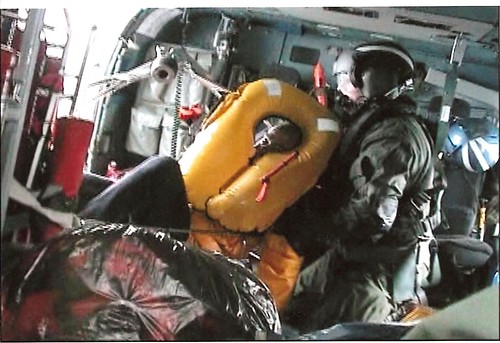 We became aware of fixed wing overflight sometime between 06:00 and 07:00 hours and estimate that the Coast Guard helicopter arrived some time around 08:30 hours. As seemingly the most affected by hypothermia and almost unconscious the crew had me lifted out first. It was a perilous process during which Coast Guard AST2 Dazzo was himself injured (later to be hospitalized with us). The life raft was destroyed and abandoned by AST2 Dazzo as the third crew member was extracted. He also recouped the GPIRB which remained in USCG custody.
We became aware of fixed wing overflight sometime between 06:00 and 07:00 hours and estimate that the Coast Guard helicopter arrived some time around 08:30 hours. As seemingly the most affected by hypothermia and almost unconscious the crew had me lifted out first. It was a perilous process during which Coast Guard AST2 Dazzo was himself injured (later to be hospitalized with us). The life raft was destroyed and abandoned by AST2 Dazzo as the third crew member was extracted. He also recouped the GPIRB which remained in USCG custody.

 Problems During Past Hurricanes
Problems During Past Hurricanes





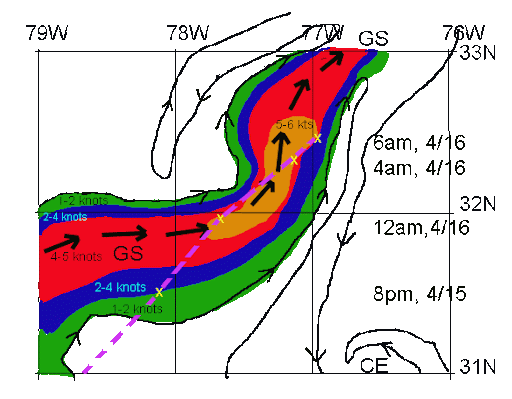
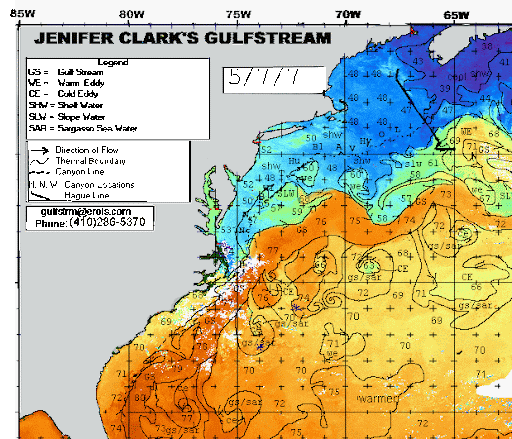









































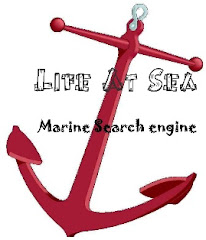






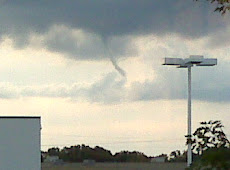






















































![Validate my RSS feed [Valid RSS]](valid-rss.png)